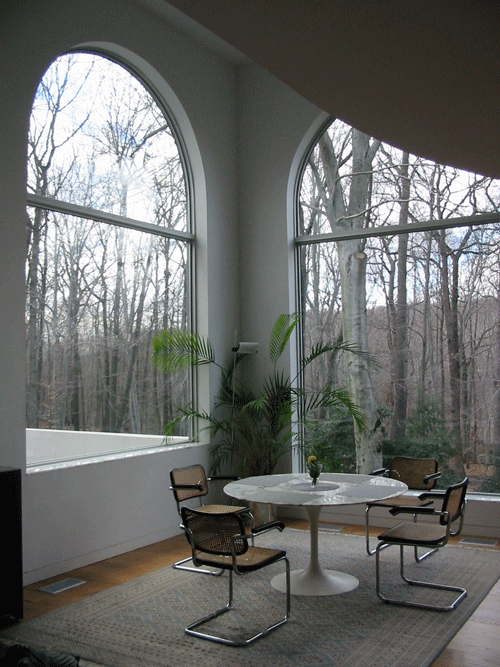Insulated Glass
Insulated Glass (IG or thermopane) is a unit comprising two or more lites of glass held apart by a spacer at the perimeter to create a sealed air space. Overall thickness ranges from a minimum of 3/8" up to 1" or more. It reduces thermal transmittance, sound transmission, and the likelihood of condensation forming to the inside living area. Insulated glass is unusual in that it has a useful life and will deteriorate or go bad over a period of time.

Most insulated glass units use a rectangular metal spacer that is filled with a moisture absorbing material (desiccant) to keep the enclosed air space free of visible moisture. The perimeter of the unit is then sealed with a sealant (butyl, silicone, polysulfide, urethane). The typical unit has sealed air, but gases such as argon can be used to fill the unit to provide higher insulating values. When the air sealed inside the unit is heated or cooled, or if the barometric pressure rises or falls the unit will expand or contract. This causes the two panes of glass to bow away from or towards each other causing visual distortion.
Numerous types of glass can be incorporated into a unit. Tinted or other heat absorbing glass should always be in the outboard lite, and the unit may require tempering or heat strengthening to prevent excessive thermal stress and possible breakage. You should consider tempering any glass where the heat absorption is greater than 50%. Mutins are decorative dividers that can be installed in a grid pattern in the airspace.
Manufacturers typically provide an express limited warranty against seal failure only, typically 5 to 10 years, to provide a replacement unit. There are typically no warranties against breakage from any cause. The manufacturer's sole responsibility is to supply a replacement unit. The warranty does not include any costs associated with removing the existing unit or installing the replacement unit. Film applied to insulated glass immediately voids all manufacturer’s warranties. No warranty extends to any units installed in high moisture environments including but not limited to pool enclosures and greenhouses, units installed on a slope of more than 15 degrees from vertical, units installed in high vibration environments, or units that have less than 2" ventilated air space between unit and indoor shading and minimum 2" between shading and surrounding construction.

